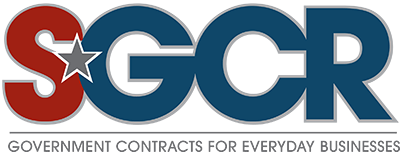Navigating sole source procurement? When a single supplier is the only option for your procurement needs, understanding the nuances becomes essential. This article cuts through complexity to address when sole sourcing is necessary, the justification process, and how to manage the associated risks.
By the end, you’ll be well-equipped to approach sole source contracts with confidence, ensuring compliance and due diligence in your single-source endeavors without resorting to fluff or salesmanship.
Key Takeaways
-
Sole source procurement is a specialized method used when only one supplier can fulfill the requirements needed for a commodity, technology, or service, oftentimes due to specialized knowledge, compatibility needs, or exclusive rights.
-
Legitimate sole source situations require thorough justification, including market research and analysis, evidence of unique expertise or specialized needs that only one vendor can fulfill, and a demonstration that the price is fair and reasonable.
-
A sole source situation exists when specific criteria are met, emphasizing the need for thorough verification of the exclusivity of the source, especially in cases involving ‘sole brand’ or ‘sole manufacturer’ items that may have multiple distributors. This step is crucial to ensure that the selection of a single supplier is justified as the only available source for a product or service.
-
The sole source justification process is rigorous and requires approval from the organization’s procurement services, with steps including the completion and review of a justification form, internal review and approvals, and adherence to transparency and compliance regulations to manage risks effectively.
Defining Sole Source Procurement

In the realm of procurement, variety is the spice of life. Having multiple suppliers to choose from allows a procurement team to leverage competitive bidding, ensuring the best value for the organization.
But what happens when only one supplier can fulfill a specific requirement?
Welcome to the world of sole source procurement, a method that selects a single vendor to provide required commodities, technology, or services.
This procurement method is reserved for scenarios where only one supplier can fulfill the specific requirements needed for a commodity, technology, or service, making it a stark contrast to competitive bidding processes, which involve multiple suppliers competing for a contract.
In such cases, the competitive bidding requirement is not applicable.
Characteristics of Sole Source Procurement
Sole source procurement is distinct, with unique characteristics that set it apart from other procurement methods. One of the defining characteristics of sole source procurement is that it involves scenarios where there is only one supplier capable of delivering the required service or product.
This situation can arise due to the provider’s specialized knowledge or expertise, which becomes a determining factor in sole source procurement decisions.
Another crucial characteristic that can necessitate a sole source procurement approach is compatibility with existing systems. For instance, a business might need to procure a specific piece of equipment that is only compatible with the systems already in use.
In such cases, the procurement team has no option but to go for sole source procurement, even if other suppliers exist who can provide similar but incompatible products.
Common Scenarios for Sole Source Procurement
So, when is sole source procurement most likely to occur? There are several common scenarios where it is vital. These scenarios often involve a need for expertise, standardization, quality, compatibility, and exclusive availability of products or services.
For instance, when identical equipment is needed for compatibility, sole source procurement can be the only viable option. The same is true when maintenance is required by the original equipment manufacturer (OEM) without alternative service providers.
Another common scenario necessitating sole source procurement is when exclusive rights are in place. This could be the case when products are patented and available only from the patent holder, or when a particular supplier is named in a funding source award.
In such cases, even if the procurement team wanted to consider other suppliers, they wouldn’t be able to.
Identifying a Legitimate Sole Source Situation
Identifying when a sole source situation exists is crucial for justifying the selection of a single supplier as the only available source for a product or service. It’s important to verify the exclusivity of the source and highlight the criteria used to determine such a situation.
A sole source purchase is justified when unique attributes or circumstances dictate that only one provider is capable of supplying the desired goods or services. This must be demonstrated along with ensuring the price is fair and reasonable.
For procurements exceeding specified thresholds, justification must document the effort to find alternative suppliers, listing unique technical requirements and companies contacted.
However, a sole source justification based solely on quality, preference, or standard price comparisons is invalid. This indicates the presence of competitive market alternatives.
Legitimate sole source situations may occur if there is only one sole manufacturer who can meet the salient specifications and either sells directly or exclusively through a single representative, making them the only source.
In such cases, the manufacturer may also be the patent or copyright holder of the product, confirming that a sole source exists.

Market Research and Analysis
When it comes to identifying a legitimate sole source situation, conducting a market survey is an integral part of the process. The extent of market research should be reasonable and can range from phone to written inquiries with suppliers to ensure that competition is not feasible.
If no alternative suppliers are identified after conducting extensive market research, a sole source justification is required.
This involves documenting the evaluation of potential alternative supplies and explaining why they could not satisfy the requirements.
Compatibility and Standardization
In addition to market research and analysis, compatibility and standardization considerations are crucial in determining the need for sole source procurement. Compatibility with existing equipment or systems is a crucial factor in determining the need for sole source procurement.
This means that if a business needs to procure a specific piece of equipment that is only compatible with the systems already in use, sole source procurement becomes the only viable option.
Sole source procurement is also often justified when the procurement of identical items is necessary to ensure compatibility and interoperability, and only one source provides the required equipment, including handling maintenance or repair calls.
Another factor that can justify sole source procurement is the need for standardization. For instance, in collaborative projects or research continuity situations, standardization requirements that specify a single supplier may necessitate sole source procurement.
Unique Expertise and Specialized Services
Unique expertise and specialized services are often a determining factor in justifying sole source procurement. For instance, when a consultant possesses unique expertise and specialized knowledge based on their individual talent or creativity, sole source procurement can be justified.
Similarly, unique skills or experience are essential in justifying sole source procurement when the expertise required for a project is not available from other suppliers.
In certain cases, such as those involving specific medical or surgical decisions, sole source procurement is utilized because the product is only available directly from the manufacturer.
These scenarios underscore the critical role that unique expertise and specialized services play in justifying sole source procurement.
The Sole Source Justification Process
Once a legitimate sole source situation has been identified, the next step is to navigate the sole source justification process. This process includes completing a Sole/Single Source Justification Form or memo to provide price justification for a sole source procurement.
However, justifications for sole source procurement are subject to review and must receive approval from the organization’s procurement services prior to placing an order.
Completing the Sole Source Justification Form
The Sole Source Justification Form is not just a formality. It is a comprehensive document that requires detailed information. This includes specific technical reasons for selecting the vendor, documentation of compatibility requirements with existing systems, and a comprehensive explanation of the vendor’s unique advantages.
After completion, the department requester must obtain signatures on the form and submit it for approval to a designated department approver.
The review process includes a thorough evaluation by a buyer to confirm that the submission contains complete information, detailed justification, and appropriate documentation supporting fair pricing. This ensures that the procurement process is not only transparent but also justifiable and defensible.
Internal Review and Approval
Obtaining internal approvals is a critical step in the sole source procurement process to ensure adequate oversight and compliance.
A certificate of independent price determination is often needed during internal reviews to confirm that the pricing was independently reached and not shared with competitors. This helps to maintain the integrity of the procurement process.
Both management and procurement teams are involved in reviewing and approving the procurement to safeguard against conflicts of interest and guarantee the legitimacy of the procurement process.
This internal review and approval process helps to maintain the integrity of the procurement process, ensuring that all decisions are made in the best interest of the organization.
Public Notice and Transparency
Public notice and transparency are crucial elements of the sole source procurement process. State-funded sole source procurements are required to be publicly advertised. State-funded sole sources must be posted by public notice for a specific duration on designated websites before proceeding with the purchase.
Considerations for the review, approval, and posting of the public notice are essential components of the sole source procurement process to ensure transparency. This transparency not only builds trust with the public but also helps to ensure that the procurement process is fair and unbiased.
Managing Risks and Ensuring Compliance in Sole Source Procurements
While sole source procurement can be an effective solution for specific procurement challenges, it is not without its risks. Changing business conditions, such as supply chain disruptions, inflation, and scarcity of raw materials, necessitate vigilant risk management in sole source procurement. Therefore, procurement teams must implement strategies to manage these risks effectively.
One way to manage risks is by using a risk register and categorizing sole-source suppliers with a traffic light system. This helps to quantify and prioritize potential impacts on operations.
Another strategy is implementing a ‘no sole source’ policy that requires managerial approval for sole-source components in product design, which can significantly reduce procurement risks.
Avoiding Conflicts of Interest
Avoiding conflicts of interest is a crucial aspect of managing risks in sole source procurement. Agencies are expected to conduct business impartially, ensuring no entity receives preferential treatment and the highest level of public trust is upheld.
Conflicts of interest must be actively avoided by government officials, necessitating self-disqualification from procurement processes when personal impartiality could be compromised, such as during employment discussions with an offeror.
Federal employees are strictly forbidden from receiving gifts or value items from entities affected by their official duties or seeking government business to prevent the appearance of corrupt practices.
There are also defined restrictions on former federal officials receiving compensation from contractors they engaged with in large procurements within a year after their involvement, avoiding potential pay-to-play perceptions.
Compliance with established conduct standards per Executive Order 11222 and federal regulations ensures that the sole source justification statement is not influenced by the vendor and is conducted within legal and ethical bounds.
Ensuring Fair Pricing
Fair pricing is another critical aspect of managing risks in sole source procurement. Supporting documentation for cost justification could comprise:
-
Quotes from competing suppliers
-
Web search results
-
Purchase histories
-
Pricing benchmarks from other institutions
These can help secure fair and reasonable pricing for the university. Price analysis concentrates on evaluating the fairness of the supplier’s overall price proposal without dissecting its constituent parts, whereas cost analysis involves an in-depth review of the individual constituents that make up the proposed total price.
To ensure that pricing is equitable in the absence of competition, profits can be negotiated as a distinct element, considering the transaction’s complexity, the level of risk involved, and the supplier’s history of performance.
This approach ensures that the organization is not overpaying for the product or service and that the supplier is receiving a fair profit for their work within the existing contract.
Meeting Legal and Regulatory Requirements
Meeting legal and regulatory requirements is another important aspect of managing risks in sole source procurement.
For state-funded sole source purchases above a certain threshold, obtaining advance approval from the State Department of Enterprise Services is necessary in addition to an organization’s own internal procedures.
The Sole Source Justification process must align with federal regulations such as 2 C.F.R. § 200.320(c), which mandates transparency and public notice for Federal Awards-related procurements.
Established acquisition policies strive to facilitate full and open competition, and these policies are meant to cover the full spectrum of competitive scenarios.
Agencies have access to different competitive procedures, including sealed bids and competitive proposals, to satisfy the requirement for full and open competition.
By adhering to these legal and regulatory requirements, organizations can ensure that their sole source procurement processes are compliant and legally defensible.
Case Studies: Successful Sole Source Procurements
To illustrate the concepts discussed in this post, let’s look at some real-world examples of successful sole source procurements. These case studies show how sole source procurements can be effectively utilized to resolve specific procurement challenges and align with strategic organizational goals.
One example is the restructuring of procurement functions at UCB, a global biopharmaceutical company. UCB used sole source procurement to eliminate inefficiencies and deliver higher value.
Another example is MOL Group, a multinational oil and gas company. MOL Group updated its procurement targets to better reflect wider business strategies, showcasing the role of sole source procurement in achieving enterprise-level objectives.
These case studies highlight the strategic and practical value of sole source procurement in a variety of contexts.
Summary
Understanding sole source procurement is crucial for procurement teams navigating today’s business environment. From defining what sole source procurement is, identifying legitimate sole source situations, through the justification process, to managing risks and ensuring compliance, each step is critical.
As showcased by the case studies, sole source procurement can be an effective strategy when used appropriately. The key is to navigate the process with transparency, due diligence, and a commitment to achieving the best value for the organization.
Frequently Asked Questions
What is sole source procurement?
Sole source procurement is a method that selects a single vendor to provide required commodities, technology, or services, and it is used when only one supplier can fulfill the specific requirements needed.
When is sole source procurement used?
Sole source procurement is used when there is only one supplier capable of delivering the required service or product, often due to their specialized knowledge or compatibility with existing systems. It is typically employed to save time and resources by avoiding a competitive bidding process.
What is a legitimate sole source situation?
A legitimate sole source situation occurs when only one provider can supply the desired goods or services at a fair and reasonable price, due to unique attributes or circumstances.
How is fair pricing ensured in sole source procurement?
Fair pricing in sole source procurement is ensured through supporting documentation for cost justification, price analysis, and negotiation of profits as a distinct element. These measures help in justifying the fairness of the pricing.
What are some examples of successful sole source procurements?
Some examples of successful sole source procurements include UCB’s restructuring of its procurement functions and MOL Group’s updating of procurement targets, both demonstrating effective outcomes in the procurement process.


